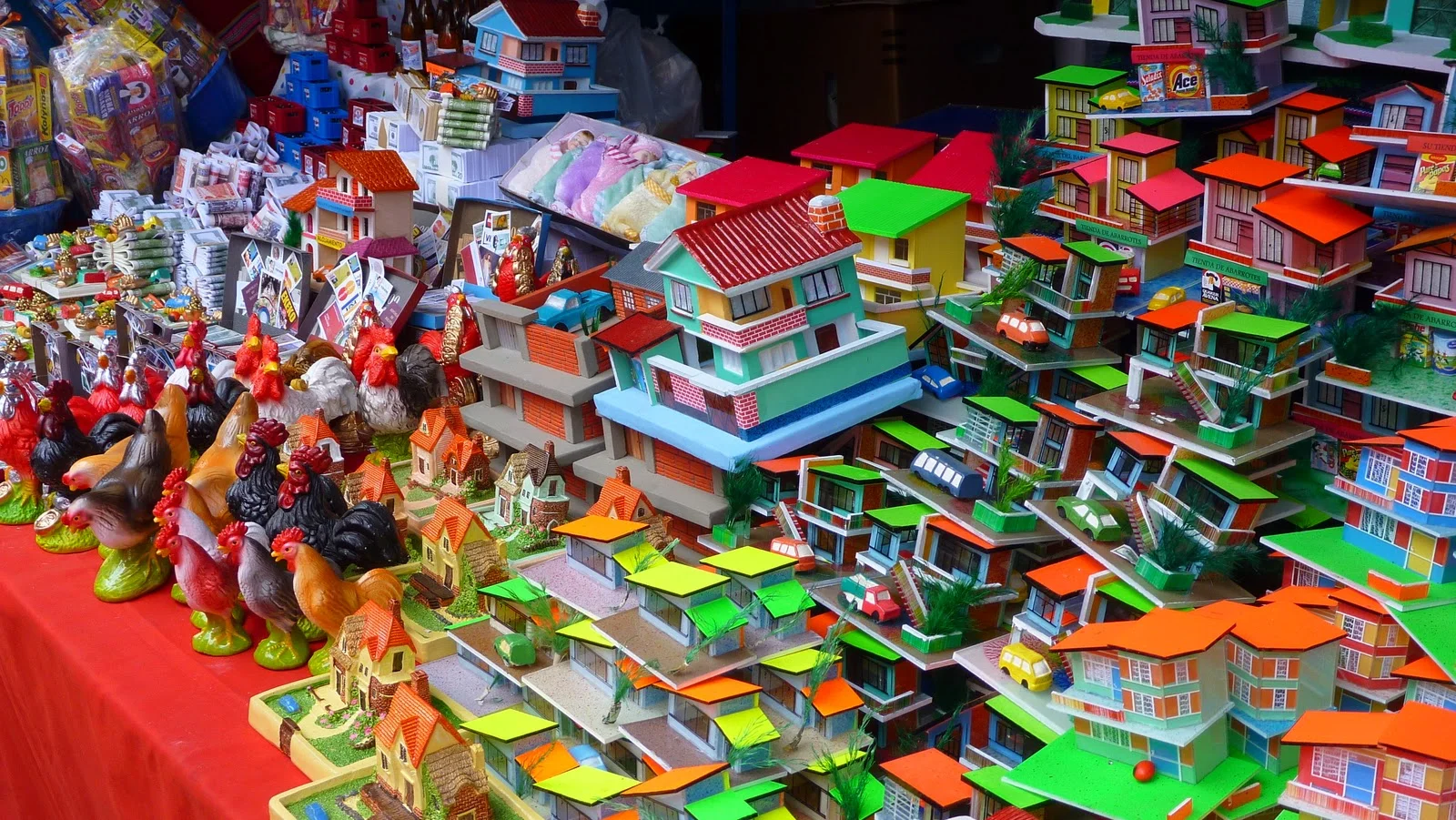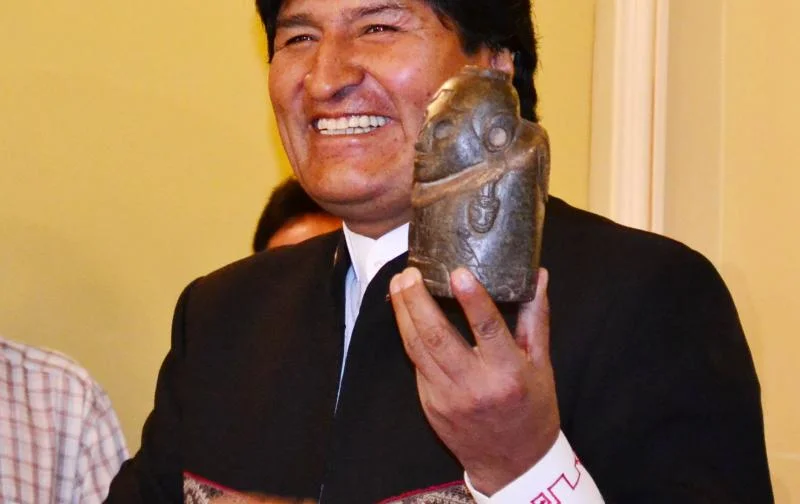Alasita, a traditional Bolivian event
Opening ceremony of Alasita 2017 and traditional Bolivian snacks (Photo: Bolivian Embassy in Seoul)
by Hwang Jeong-eun (General Secretary, ISC)
The International Strategy Center was invited to the opening ceremony of Alasita 2017 by the Bolivian Embassy in Seoul on Jan. 31. The Bolivian Embassy holds the event every year around late January in the embassy, but this year, it was held in an open space in Seoul Citizens’ Hall to allow more people to experience Bolivian culture for two days. The participants received pouches with fake money to buy handmade miniatures prepared by the embassy. People were able to experience buying the miniatures with hope for the new year and praying to Ekeko, the god of abundance. There were also traditional Bolivian snacks and drinks, and a photo exhibition showing Alasita in La Paz, Bolivia.
With Guadalupe Palomeque de Taboada, Bolivian Ambassador
Alasita means “buy me” in the language of the Aymara, the biggest indigenous tribe in Bolivia. Alasita was originally celebrated by farmers to pray to Ekeko. They would give him miniature presents to wish for plentiful crops in the year ahead. After Bolivia was conquered by the Spanish, the date was changed from September to January to commemorate the 1781 siege of La Paz led by the independence activist Tupac Katari.
Alasita is held in La Paz on Jan. 24 and continues for a month. People go out with shopping bags to fill up with handmade miniatures that contain their hope for the new year. People could “purchase” everything from houses, cars and electronics to clothing, food, computers, flight tickets and university degrees. The miniatures are made by skillful craftsmen, and about 6,000 Bolivian artisans sold their miniature products this year.
Many Bolivians purchase a small statue of Ekeko and put it in their homes for a year. Then they buy miniature items they hope Ekeko will grant in real life. Next, they have the tiny presents blessed by a yatiri, an indigenous Aymara wiseman, and then they also go to a Catholic Church to get blessed. Finally, they pin the gifts to Ekeko’s poncho while praying for good luck. Ekeko is regarded as a demanding god who must be kept happy, so people provide him with miniature gifts, light a cigarette in his mouth, and throw alcohol in front of him before drinking. In return, Ekeko watches over their families and keeps bad luck at bay.
Miniatures of Ekeko, the god of abundance (Photo: Bolivian Embassy in Seoul)
Various handmade miniatures (Photo: Bolivian Embassy in Seoul)
Alasita was proclaimed a “Traditional Cultural Heritage of the City of La Paz” in 1998 and a “Cultural and Intangible Heritage” in 2005. The Bolivian government then registered the “miniature press” of the city of La Paz in Unesco as a Memory of the World in Latin America and the Caribbean with collections of "Alasita miniature newspapers” published since 1839 up to date. This tradition was further reinforced when Evo Morales, the president of Bolivia showed the “Illa Ekeko”, a nearly 2,000-year-old stone sculpture at the Government Palace in 2014. This piece was stolen from Bolivia in 1858 by a Swiss scientist and was returned to Bolivia after 156 years in 2014 by the History Museum of Bern.
Evo Morales, the president of Bolivia holds the statue of Illa (Photo: http://bit.ly/2kvWsDT)




